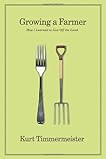Published as her first novel in 1994 when the author was 25 years old, this book received immensely favorable reviews. Many reviewers and readers were ready to nominate Danticat as the new spokeswoman for Haitian immigrants, so many of them since the late 1950’s that they are called the Haitian Diaspora.
I picked up this book, the first I have read of Danticat’s, with the expectation that I would learn something about Haiti, and also something about the experience of being an immigrant. Edwidge Danticat was born in Haiti, and her parents left her and her younger brother when she was only 4 years old to go to the United States. Her parents had expected to send for them right away, but difficulties and red tape extended the separation so that Edwidge was 12 years old when she finally joined her parents in New York City. The young girl in Breath, Eyes, Memory has a similar experience, living many years with her aunt in Haiti until her mother finally sends for her from New York.
There the similarity ends – for Sophie, the girl in the book, has a mother but no father. Her father was a thug – probably a Tonton Macoute, the rural militia group that dictator Francois Duvalier cultivated as his strong arm, who raped, robbed and brutalized citizens for their own pleasure and personal gain. This man raped her mother, Martine, pushing her down in a cane field until he had pounded out his purpose on her and in her. She could not see his face, as he wore a mask, but his likeness seems to be borne by Sophie, who doesn’t resemble her mother’s family.
Danticat wants to write about the distancing that takes place when families separate across continents, with oceans between them, and about the ways they try to gather up their strings of attachment and reconnect with each other. Martine, the mother, has never “processed” her rape and has been suicidal since that time, with ever recurrent nightmares of the event, even after twenty years. In a stance that Danticat presents as Haitian, Martine overly protects Sophie as she matures, not letting her out of the house except to go to school. You have to wonder how Sophie manages to grow up with no friends, living in a world peopled only by her mother and Marc, Martine’s Haitian-American gentleman friend, who is wealthy and helps Martine, but at a distance. Martine’s need to guard and protect her daughter paradoxically ends up in tearing them apart.
How much is this book about Haiti? Some readers have embraced Danticat’s writing as a much-needed voice for female pain and suffering, particularly the rape and humiliation present in countries undergoing post-colonial unrest and upheavals. But Danticat is also witnessing regarding cruel tradition passed on from mother to daughter, in this case mothers’ “testing” their daughters, making sure their virginity is intact. Haiti’s women are strong, but traditionally the culture is one where men are valued over women, and the woman’s offering of herself – her body – is her principal worth. Immigration has given Martine, and, by extension, Sophie a new life, but as Danticat writes: “There is always a place where nightmares are passed on through generations like heirlooms.” In this first novel, Danticat evokes such nightmares effectively, but her characters are not strong enough to dispel them. Sophie’s catharsis regarding her mother’s pain is willed by Danticat, but that kind of liberation is not picked up so easily – not by phrase and not by ritual acts, such as Sophie pounding the stalks of cane at the story's end.






















